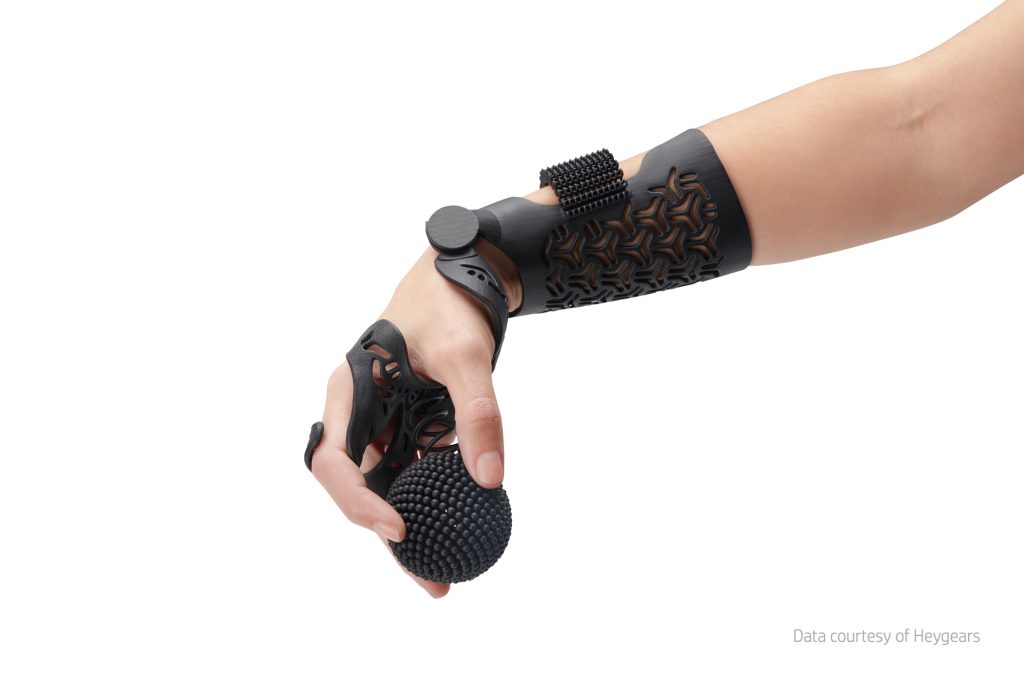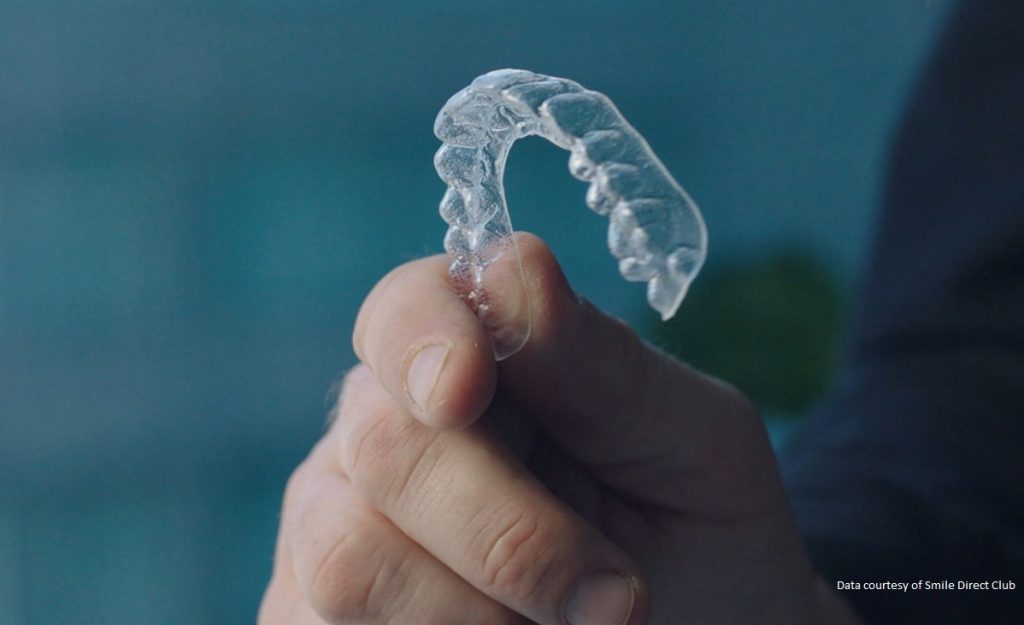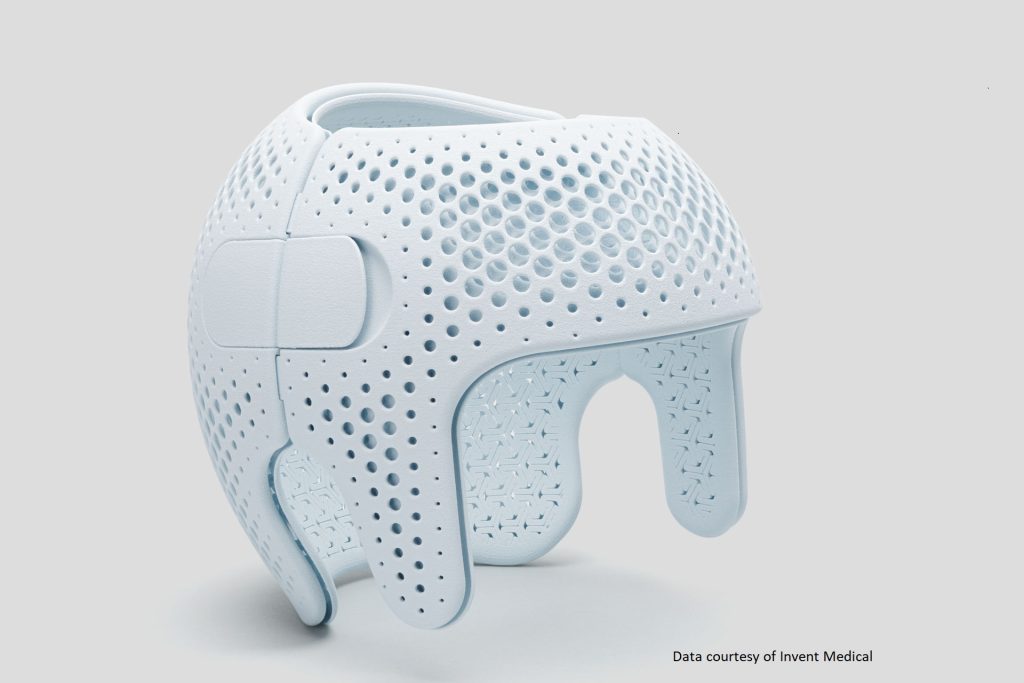Since they launched last year, HP’s latest Jet Fusion 5420W and Metal Jet S100 systems have significantly expanded the medical 3D printing potential of its portfolio.
With the Jet Fusion 5420W, HP has introduced an ideal means of 3D printing white medical parts that can be customized to meet patient needs. The firm’s Metal Jet S100, on the other hand, now allows manufacturers to scale cost-efficiently into volume production, in a way that could be attractive to those 3D printing in medicine or other related use cases.
That said, HP’s wider portfolio also continues to facilitate medical 3D printing in applications ranging from orthodontic aligners to lifelike anatomical models. One such beneficiary, HeyGears, has found that adopting HP Multi Jet Fusion (MJF) has provided it with the design freedom to customize orthotics to patients while making them more breathable, and realizing cost savings via part consolidation.

“The personalized design, fixing method, and the additional adjustable structures can effectively prevent problems such as muscle atrophy, skin discomfort, and nerve and blood vessel compression,” explains Dr. Heyuan Huang, Co-Founder and EVP of HeyGears. “The use of 3D printing technology to create 3D printed custom orthotics and replacing traditional methods enable patients to obtain the latest treatment options and the best medical experience.”
“Design freedom (with HP Multi Jet Fusion) allows us to think differently and put multiple functional parts into one product, which also saves on assembly costs.”
Multi Jet Fusion (MJF) outside of medical 3D printing
In the dental field, one of the most prominent users of HP medical 3D printing is Smile Direct Club, a US-based aligner manufacturer. At the firm’s “Smile House” production facility, just outside of Nashville, 60 HP Jet Fusion 3D printers are deployed in the serial manufacturing of customer-specific molds, which are later used to create clear plastic aligners.
According to Smile Direct Club, as many as 80% of Americans could benefit from orthodontic care, but due largely to the cost of treatment, just 1% get it. However, compared to traditional braces, which can cost anywhere from $5,000 to $8,000, the company’s 3D printed alternatives are priced at $1,950, making them much more accessible.

Another aspect of dental 3D printing that Smile Direct Club continues to benefit from is material flexibility and reusability. Not only does manufacturing with Multi Jet Fusion (MJF) facilitate the creation of complex molds from industrial-strength Nylon 12, but it does so with greater material efficiency than traditional subtractive production methods allow.
Working with HP and Ford, Smile Direct Club has also begun repurposing its unneeded 3D printed parts. Using the firm’s discarded molds and any HP MJF powder thrown away by Ford, Lavergne has developed a means of creating high-quality recycled plastic pellets, suitable for injection molding. These are later turned into fuel-line clips by Ford supplier and assembly system manufacturer, ARaymond.
Addressing white goods applications
One of HP’s latest launches, the Jet Fusion 5420W 3D printer, is already proving to be a popular means of producing innovative medical parts. Capable of manufacturing parts up to 380 x 284 x 380 mm in size at a precision of 1200 dpi, the machine is said to be particularly well-suited to the creation of white goods, as Castomade has found out.
Thanks to HP’s medical 3D printing technology, the cast manufacturing specialist has been able to drive further application innovation in the healthcare sector, where white is the industry standard. The inherent properties of MJF-3D printed parts have also facilitated the creation of lighter-weight custom casts that are more comfortable and breathable for patients to wear.
Elsewhere, deploying 3D printing in medicine is something of a specialism for Invent Medical as well. Utilizing Jet Fusion 5420W 3D printing, the firm has been able to expand its offering, and offer a new generation of custom orthotics and prosthetics. Specifically, Invent Medical has begun 3D printing white cranial remolding orthoses, before using DyeMansion post-processing to color them for pediatric patients.

“HP 3D printing helps turn our wildest ideas into reality to offer our patients a new generation of advanced orthotic and prosthetic custom devices,” explains Jan Rosicky, Co-Founder of Invent Medical Group, s.r.o. “Color and aesthetics are key, so we are excited that with white MJF parts we can enhance our offering for pediatric patients further.”
Medical 3D printing in the metal space
HP Metal Jet technology is also helping boost the adoption of 3D printing in medicine at firms like Metal Injection Molding (MIM) specialist Parmatech. In the past, the system has allowed the early adopter to accelerate product iteration, and cost-effectively scale into volume production, thanks to its reliance on cheaper MIM materials over spherical 3D printing powders.
“Our threshold is currently about 10,000-12,000 units per year, anything below that doesn’t make economic sense. The upfront costs are too great and the long-term savings are spread out over too many years,” explains Rob Hall, President of Parmatech. “What HP Metal Jet technology does, is allow us to immediately take that business and say ‘it’s going to be more cost-effective.’”
Watch video on how HP Metal Jet technology paves the way for Parmatech’s manufacturing innovation.
Any questions? Reach out to an HP medical 3D printing expert here.
To stay up to date with the latest 3D printing news, don’t forget to subscribe to the 3D Printing Industry newsletter or follow us on Twitter or liking our page on Facebook.
While you’re here, why not subscribe to our Youtube channel? featuring discussion, debriefs, video shorts and webinar replays.
Are you looking for a job in the additive manufacturing industry? Visit 3D Printing Jobs for a selection of roles in the industry.
Featured image shows 3D printed orthotics. Photo via HeyGears.


